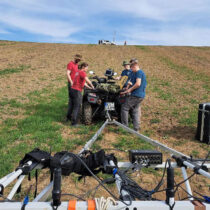Climate or Microclimate is the name for the sum total of environmental conditions prevailing in a museum. A museum’s microclimate includes acoustic, atmospheric, thermal and optic conditions. The main factor determining acoustic weather conditions in a museum is the noise level. Certain sound frequencies have been known to create oscillation in objects that are tuned in to these frequencies, and to cause damage. The main factor that determines the atmospheric climate in a museum are the particles of dust in the air; sulphur dioxide, nitrogen, hydrogen, ammonia, ozon and chloroionta. The warmth of the microclimate depends on the degree of moisture and what temperature the room has. The effect had on museum objects by moisture, depends on the material that exhibits are made of. Metal for instance can get corroded by the damp, and absorbent materials such as certain fibres, or bone can crack or warp. In the case of organic materials such as paper, papyrus, leather or woven materials, damp causes the fibres to become stiff and brittle. The temperature possibly affects the moisture level and brings about certain chemical reactions faster. In the case of the optical environment in a museum, this is regulated by control of visible and ultra-violet radiation. Museum exhibits are divided into those with simple molecular systems (metals) and those with complex molecular systems such as wood and materials. Complex materials can suffer serious photolytic or photochemical damage. This can be dealt with by controlling radiation levels and seeing that objects don’t get exposed to such radiation.
The role played by airing, lighting and acoustics in museum microclimates
02 Aug 2012
by Archaeology Newsroom
- A
- A
- A

